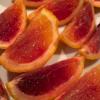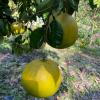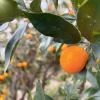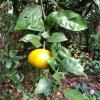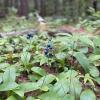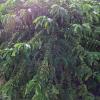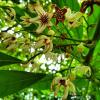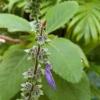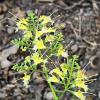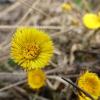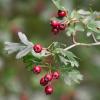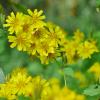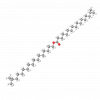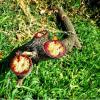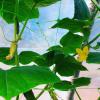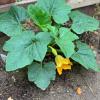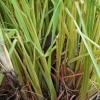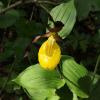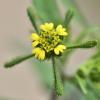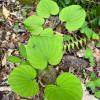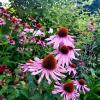The peel of the orange (Citrus Aurantium Dulcis) is considered anti-inflammatory, anti-bacterial, and anti-fungal. Its anti-spasmodic properties have made it useful in cramps and bronchial convulsions.
Plant extracts & derivatives
Plant extract aka botanical extract-based skin care products are one of the biggest trends in the beauty industry in recent years. Being naturally balanced and dense in active ingredients, botanical extracts are excellent fighters against skin aging and inflammation.
Citrus Grandis Fruit Extract is an extract obtained from the seeds and pulp of Pomelo. It is a viscous lemon-yellow liquid with an acidic 2.0 - 3.5 pH.
Citrus Grandis Peel Extract is a natural extract derived from Pamelo fruit peel. Rich in Apigenin, it is recommended for suncare and anti-aging products.
Kumquats (Citrus Japonica) are sweet in their rinds and quite tart in their pulps. They appear to be an ideal snack food for obese subjects, satisfying both sweet and sour cravings simultaneously.
Mandarin (Citrus Nobilis) gets its name from the fact that, in the past, the fruit was traditionally offered as a gift to mandarins. The fruit of this species is considered by the Chinese to be cooling.
Citrus Unshiu Peel Extract is derived from the peel of Japanese mandarin (Satsuma), a citrus-based inhibitor of tyrosinase, one of the key enzymes responsible for melanin production. It is also known under the trade name Melaslow™ from Sederma.
Clintonia, known as Clintonia borealis and more commonly referred to as the Bluebeard Lily, is found in the eastern to central North American regions.
Coffea Robusta Seed Extract is a natural ingredient derived from green coffee. It is an ingredient that can help get her body in bikini-ready shape and keep it beach party-safe, all at the same time!
Large quantities of fresh Kola (Cola Acuminata) seeds are employed in Africa for their sustaining properties. They are an important article of inland commerce in Africa. A small piece of Kola nut is often chewed before a meal to promote digestion.
Coleus Barbatus Root Extract is a natural extract from the traditional Indian plant used in Ayurveda. Rich in biologically active forskolin with stimulating and energizing properties, it is recommended for products designed to treat cellulite and for barrier repair.
Stoneroot (Collinsonia canadensis) extract is an accepted skin-soothing and anti-itch agent.
Crataegus Oxyacantha (Hawthorn) Flower Extract is a brown liquid rich in chlorogenic acids. Thanks to its hydroxyl groups of those acids, Hawthorn flower extract can chelate metallic ions like iron, detoxify cells, and limit inflammatory reactions.
Crepidiastrum Denticulatum Leaf/Stem Extract is a natural extract from a native plant (Yakushisou) that protects the skin against environmental damage and delays aging.
The sap of the Croton lechleri (Dragon's Blood) tree has a long tradition of use as a protective skin covering - providing an anti-inflammatory film, or "second skin" when it dries after application.
Honeydew melon (Cucumis melo) probably originated in southern Asia. Early Egyptians and Persians ate it, and the Greeks and Romans most definitely enjoyed it. Honeydew melons have been utilized as bracing skin tonics and moisturizers for dry skin.
Considered one of the best-known natural diuretics, Cucumber (Cucumis Sativus) is high in potassium and helps treat high and low blood pressure. Cosmetically, this fruit was used in skin toners to soothe wind and sunburns.
Cypress (Cupressus Sempervirens) was thought to produce a refreshing and stimulating bath oil and was considered a natural deodorant, having been explicitly used in foot deodorizing products.
Lemongrass (Cymbopogon Schoenanthus), a source of commercial vitamin A, was used in China medicinally to treat colds, headaches, stomach disorders, and rheumatism pain.
A member of the orchid family, the Lady's Slipper (Cypripedium Pubescens) has been employed as a gentle sedative for the nerves and antispasmodic.
Carrots (Daucus Carota Sativa) were used by Chinese medicine to treat chronic dysentery and as an anthelmintic. Carrots are considered carminative and stimulant and, as such, have been used to treat hiccups, chronic coughs, flatulence, and dysentery.
Historically, Carrot (Daucus Carota Sativa) seeds were considered carminative and stimulant and have been used to treat hiccups, chronic coughs, flatulence, and dysentery.
American herbalists have been known to use Wild Yam (Dioscorea Villosa) root to treat painful menstruation, ovarian pain and cramps, and problems of childbirth.
Introduced to the medical profession in 1887, from the turn of the century into the 1930s, Coneflower (Echinacea Angustifolia) became the best-selling American medicinal plant among physicians in the United States.
Recent pharmacological and clinical studies provide evidence for the mode of action of topical products containing Echinacea Angustifolia Leaf Extract and their therapeutic potential in clinical practice.
Historically, the juice of the Coneflower (Echinacea Angustifolia) root was used externally to bathe burns and make the intense heat of a sweat lodge more bearable.
